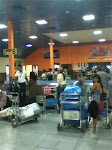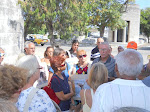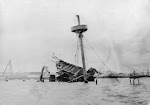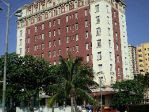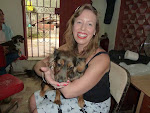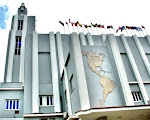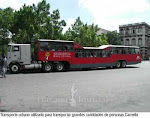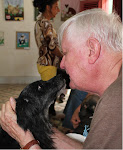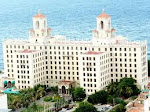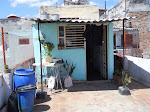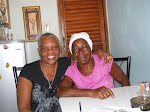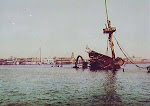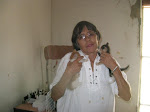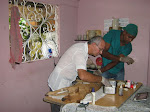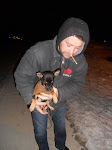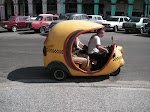Similarities and Differences
As the first country in the Western Hemisphere to proclaim, fight for, and win independence from European colonial powers, the United States became an example to emulate for the countries of Latin America. During the 1800’s, the US example prodded most of Latin America to break the bonds of Spanish and Portuguese rule. Many countries had to fight for their independence, but for some, particularly in Central America, merely proclaiming independence won it.
Cuba had a tougher time throwing off the Spanish yoke than any other Latin country—not surprisingly as it was thought of in Spain as the richest prize delivered by the Conquistadors. Not for nothing did they call it “The Pearl of the Antilles.” Cuba fought three wars of independence with Spain, losing the first two in the 1860’s and winning the last one (with American participation on Cuba’s side) in 1898. The result of what we Americans call the Spanish American War ended once and for all Spain’s dreams of having an empire in the Western Hemisphere.
Cuba established a democracy with a political system much like ours. Ties between the US and Cuba were many and strong, and the two nations became major trading partners. When it was time to build a new Capitol building in Havana, it developed into an amazing look-alike for our own Capitol
The Capitolio, built between 1926 and 1931, housed Cuba’s House of Representatives and its Senate. Its tall dome looks a little skinnier than ours, but none the less elegant. If anything, the semi-circular halls of Congress at either end are more tasteful appendages than our enormous rectangular wings. Today the Capitolio is a museum. Inside you are met with the Statue of the Republic, a bronze, gold leaf coated reminder of our Statue of Liberty, 50 feet tall, and the third tallest indoor statue in the world. She even has her right arm raised like Liberty’s. A replica of a huge diamond is set into the floor at the center of the domed hall. The real one was stolen years ago, and recovered, but never reinstalled in the floor.
It’s amazing to compare the past fraternity of Latin and North American nations with the mutual suspicion that seems to reign today. Amazing, yes, but not surprising when we realize that every nation must find its own way in the world. I’m as much a patriot as the next guy, but I don’t believe that just because something is American (meaning of the US) that it is therefore better.
Still, in the animal protection realm, for all the puppy mills, factory farms, industrial fishing, and hunting abuses we have in this country, animals here are much better off than they are there. Aniplant and The Aniplant Project are working to make the Cuban animals’ world better. But stray and even sick animals can be found in disturbing numbers in Cuba. Efforts to improve the animals’ lives there are growing, but they are still in the early stages of development. And while the average Cuban is at heart an animal lover, household pets don’t yet receive the respect and attention they need and deserve. Part of the problem is economic, of course, but there is a need for much more humane education and a general elevation of the regard in which the family holds its animals.
The optimist in me thinks we’re making progress for animals in Cuba. You can learn more about our efforts at a new website, http://theaniplantproject.org . Please visit it and make up your own mind about the value of the work we are doing for the animals of Cuba.
Les Inglis
As the first country in the Western Hemisphere to proclaim, fight for, and win independence from European colonial powers, the United States became an example to emulate for the countries of Latin America. During the 1800’s, the US example prodded most of Latin America to break the bonds of Spanish and Portuguese rule. Many countries had to fight for their independence, but for some, particularly in Central America, merely proclaiming independence won it.
Cuba had a tougher time throwing off the Spanish yoke than any other Latin country—not surprisingly as it was thought of in Spain as the richest prize delivered by the Conquistadors. Not for nothing did they call it “The Pearl of the Antilles.” Cuba fought three wars of independence with Spain, losing the first two in the 1860’s and winning the last one (with American participation on Cuba’s side) in 1898. The result of what we Americans call the Spanish American War ended once and for all Spain’s dreams of having an empire in the Western Hemisphere.
Cuba established a democracy with a political system much like ours. Ties between the US and Cuba were many and strong, and the two nations became major trading partners. When it was time to build a new Capitol building in Havana, it developed into an amazing look-alike for our own Capitol
The Capitolio, built between 1926 and 1931, housed Cuba’s House of Representatives and its Senate. Its tall dome looks a little skinnier than ours, but none the less elegant. If anything, the semi-circular halls of Congress at either end are more tasteful appendages than our enormous rectangular wings. Today the Capitolio is a museum. Inside you are met with the Statue of the Republic, a bronze, gold leaf coated reminder of our Statue of Liberty, 50 feet tall, and the third tallest indoor statue in the world. She even has her right arm raised like Liberty’s. A replica of a huge diamond is set into the floor at the center of the domed hall. The real one was stolen years ago, and recovered, but never reinstalled in the floor.
It’s amazing to compare the past fraternity of Latin and North American nations with the mutual suspicion that seems to reign today. Amazing, yes, but not surprising when we realize that every nation must find its own way in the world. I’m as much a patriot as the next guy, but I don’t believe that just because something is American (meaning of the US) that it is therefore better.
Still, in the animal protection realm, for all the puppy mills, factory farms, industrial fishing, and hunting abuses we have in this country, animals here are much better off than they are there. Aniplant and The Aniplant Project are working to make the Cuban animals’ world better. But stray and even sick animals can be found in disturbing numbers in Cuba. Efforts to improve the animals’ lives there are growing, but they are still in the early stages of development. And while the average Cuban is at heart an animal lover, household pets don’t yet receive the respect and attention they need and deserve. Part of the problem is economic, of course, but there is a need for much more humane education and a general elevation of the regard in which the family holds its animals.
The optimist in me thinks we’re making progress for animals in Cuba. You can learn more about our efforts at a new website, http://theaniplantproject.org . Please visit it and make up your own mind about the value of the work we are doing for the animals of Cuba.
Les Inglis
